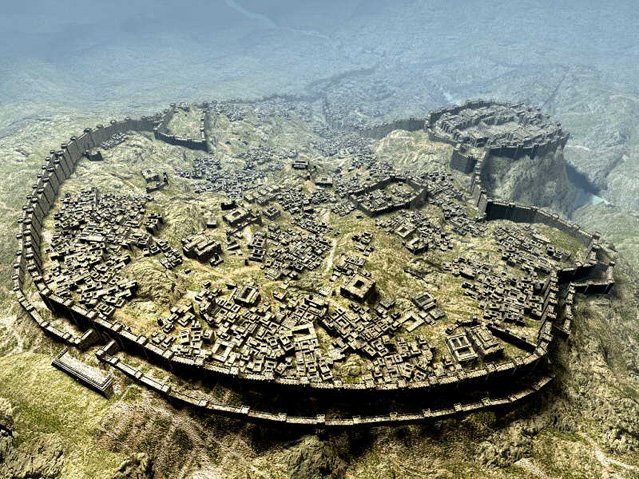Hattusa was the capital of Hittites in the Bronze Age.
Discovered in 1834-35, it's ruins lie in the Boğazköy region of central Turkey.
Image of Lion gate at Hattusa.
Discovered in 1834-35, it's ruins lie in the Boğazköy region of central Turkey.
Image of Lion gate at Hattusa.

At its peak, the city covered 1.8 sq km, surrounded by massive walls.
The city had a population of at least 40-50,000 people & inside the city there was the imperial residences, temples, people's quarters, etc.
The city had a population of at least 40-50,000 people & inside the city there was the imperial residences, temples, people's quarters, etc.

At the centre of Hittite life was their religion.
The Hittites have been called ' People of a Thousand Gods', as they assimilated Gods of conquered people into their pantheon.
The most famous is the 'Storm God', who perhaps is the precursor to Zeus and Jupiter.

The Hittites have been called ' People of a Thousand Gods', as they assimilated Gods of conquered people into their pantheon.
The most famous is the 'Storm God', who perhaps is the precursor to Zeus and Jupiter.


One of the great finds at Hattusa are the cuneiform clay tablets, popularly known as the 'Bogazköy Archive'.
The tablets contain information regarding diplomacy, contracts, correspondence, and the literature of the region.

The tablets contain information regarding diplomacy, contracts, correspondence, and the literature of the region.


The most important find among these tablets is the peace treaty between Hittites and the Egyptians, after the Battle of Kadesh in 1275 BCE.
The treaty signed in the year 1259 BCE, is the first recorded diplomatic treaty between two superpowers of the mediterranean.
The treaty signed in the year 1259 BCE, is the first recorded diplomatic treaty between two superpowers of the mediterranean.

Hattusa was perhaps burnt down in the mayhem created in the aftermath of the Bronze Age collapse in c. 1200 BCE.
In 1986, the site was declared as UNESCO World Heritage Site.
In 1986, the site was declared as UNESCO World Heritage Site.

• • •
Missing some Tweet in this thread? You can try to
force a refresh

















